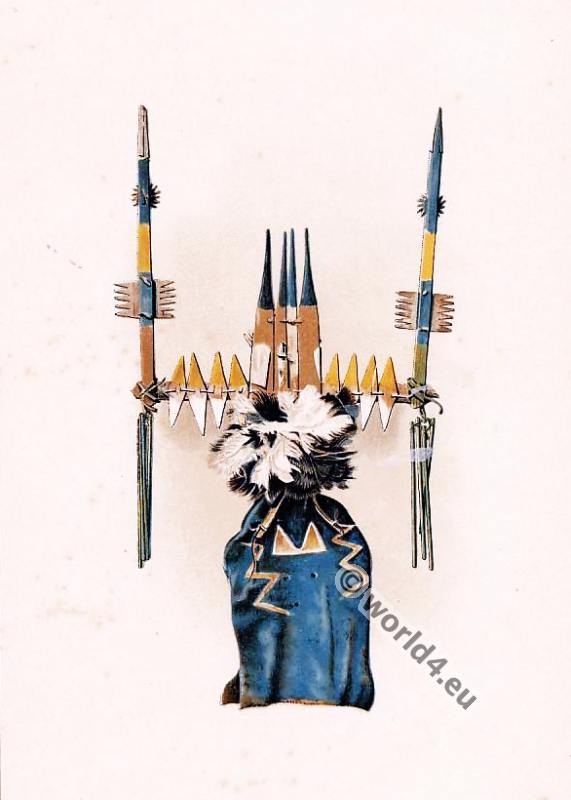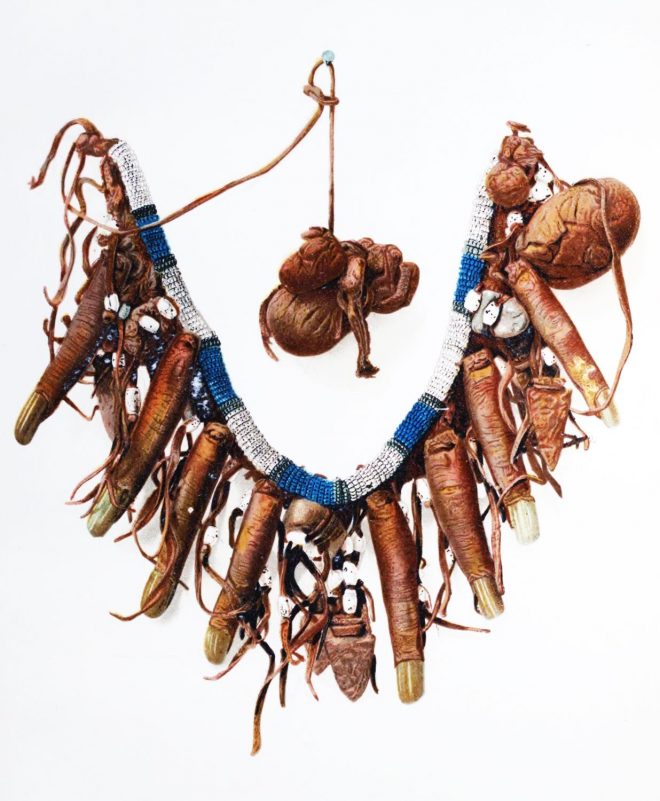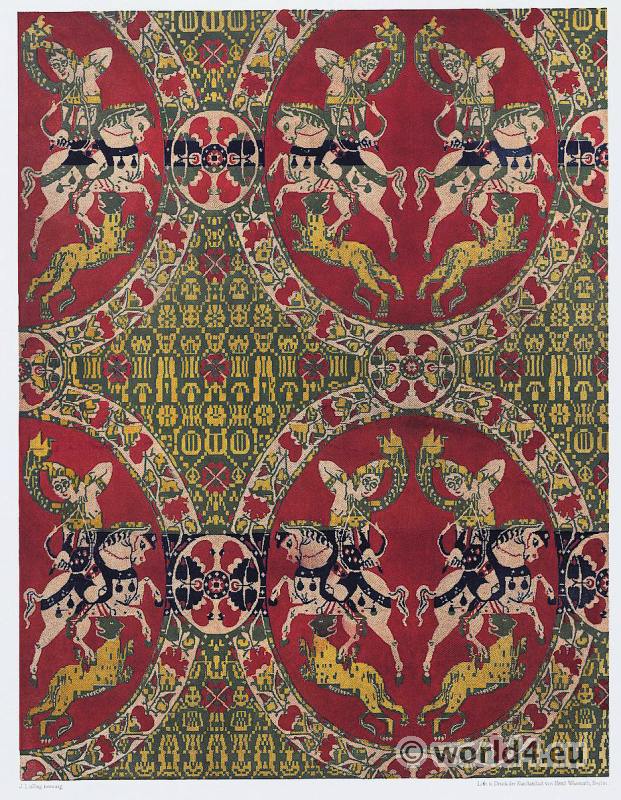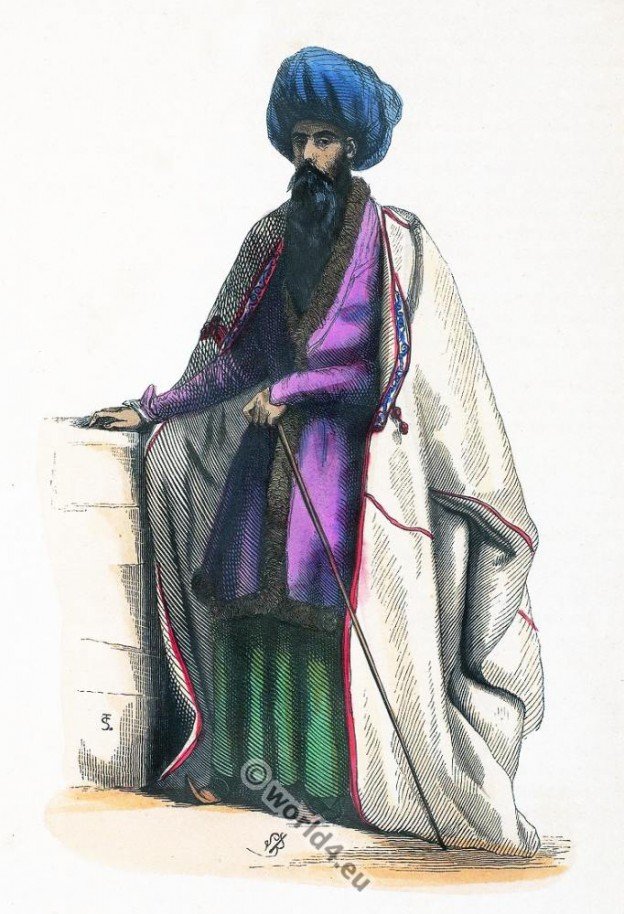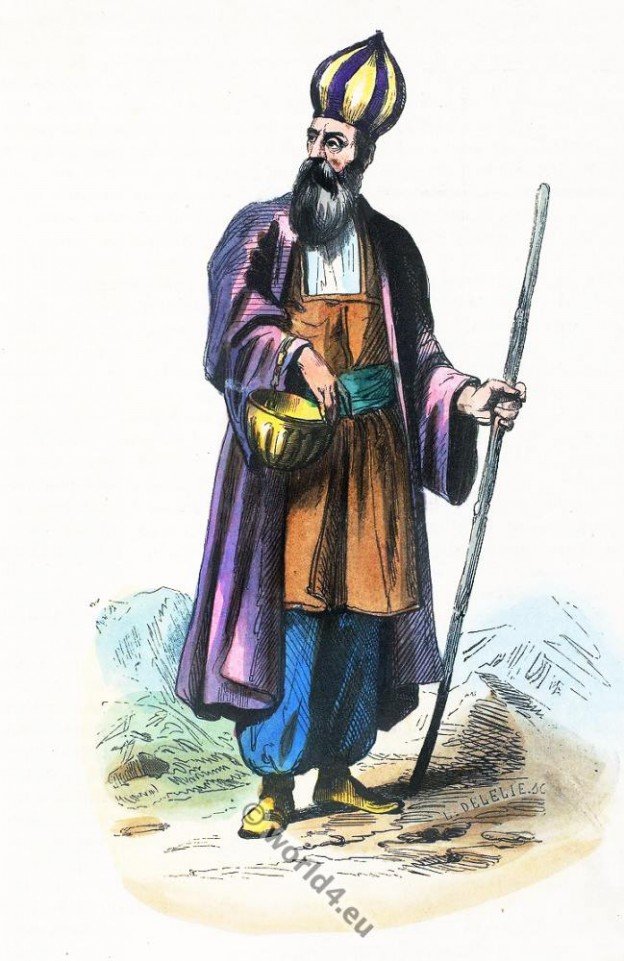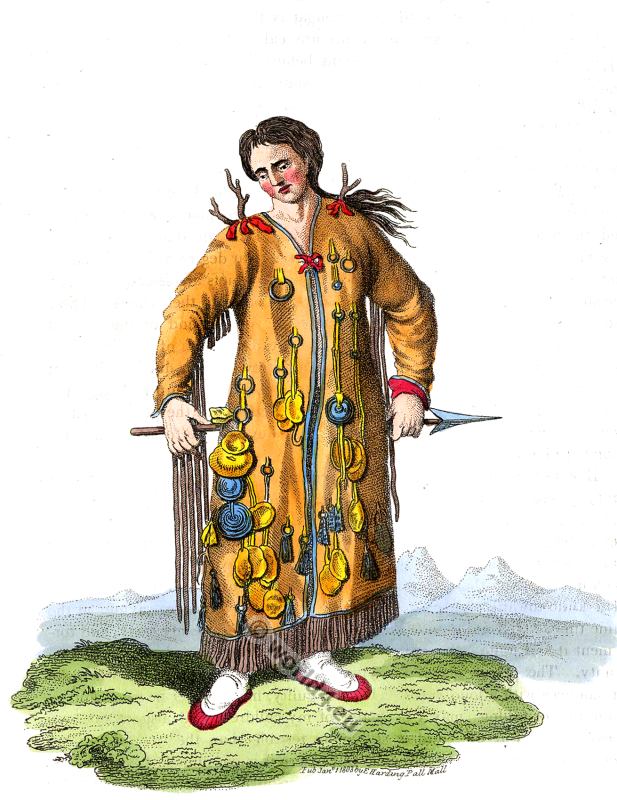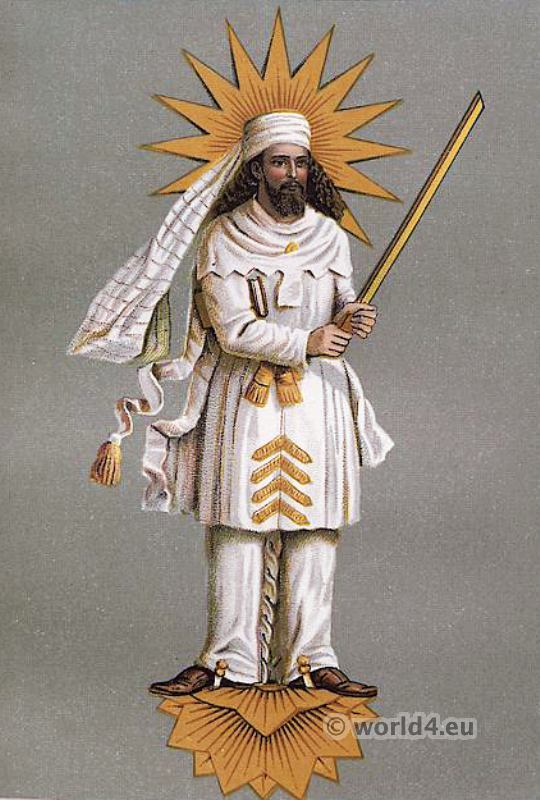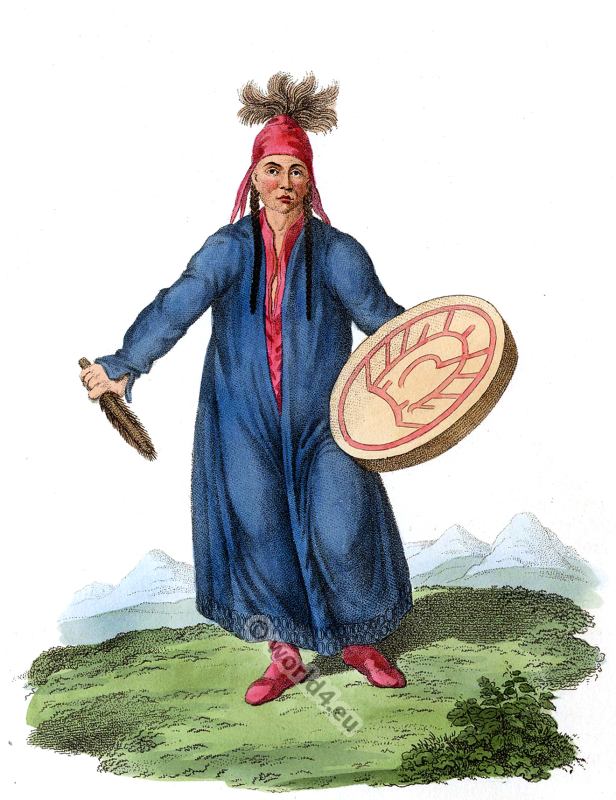Apache Ghost dance. Ceremonial head gear. Annual Ethnology Report of the US Government. Lithographed by Sackett & Wilhelms. Printed in New York: c.1897. Read more: History of the Indian Tribes… Read More
Tag: Ecclesiastical
Necklace of Human Fingers. Cheyenne Medicine Man.
The fingers were those of famous enemies, noted for their superior courage and bravery, whom the Cheyennes had killed in battle during their various wars.
Byzantine silk fabric. The mantle of St. Fridolin. 4th to 8th century.
The pattern shows a transformation of a Sassanid pattern of VI-VII. Century. The fabric itself belongs to the Byzantine period of the VII.-VIII. Century.
Persian priest or mullah in 1840
Persian priest or mullah in 1840.
A follower of Sufism. Sufi orders. Persian dervish in 1840.
Sufism is a collective term for movements in Islam that have ascetic tendencies and a spiritual orientation, often referred to by the word mysticism. A follower of Sufism is called a Sufist, a Sufi practitioner or dervish.
Back Figure of a Female Shaman, or Sorceress of Krasnajarsk.
Back Figure of a Female Schaman, or Sorceress of Krasnajarsk.
Evenk Shaman. A Tungusian Priest, in the Vicinity of the Argun.
THE Evenks (Formerly Tungusian) are pagans of the sect of the Shamans.
Back view of an Evenki Shaman in the Vicinity of the Argun.
The Evenks are recognized as one of the Indigenous peoples of the Russian North. The traditional religion of the Evenki is strongly influenced by shamanism.
Parsis in India. The Parsee.
History of the Parsis: including their manners, customs, religion and present position by Dosabhai Framji Karaka; in two volumes. London, 1884.
A Female Shaman, or Sorceress of Krasnojarsk.
Magician, Shamane, Devineresse, Krasnojarsk, Siberia, Russia,

